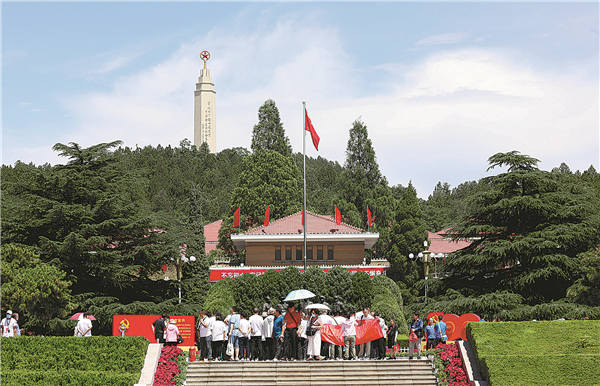

Then, under the leadership of the Central Working Committee, the Shanxi-Chahar-Hebei Field Army won victories in a number of battles, especially in the liberation of Shijiazhuang, an important city which lies at the junction of three railways. The victory connected two liberated areas into one single territory, paving the way for the CPC Central Committee to settle in Xibaipo.
In May 1948, all three divisions of the CPC Central Committee had reunited in Xibaipo, and the place became the command center for China's revolution.
"In the space of 10 months, the CPC leadership commanded the three major military campaigns that decided the future destiny of China and held the Second Plenary Session of the Seventh CPC Central Committee, laying out the blueprint of the New China," says Peng.
The three decisive campaigns, namely Liaoshen, Huaihai and Pingjin, took place between September 1948 and January 1949, lasting a total of 142 days. After the campaigns, the Kuomintang lost much of its main force, and the People's Liberation Army had laid a solid foundation for overall victory.
The Second Plenary Session of the Seventh CPC Central Committee, held in March 1949, in preparation for the establishment of New China saw Mao propose the "Two Musts" dictum to remind Party members to remain modest and hardworking when the final victory was near.
Several days after completing the session, the CPC leadership left Xibaipo for Beijing. Just before they left, Mao compared this journey to "going for the big exam in Beijing".
In ancient China, going to the capital to sit, and pass, the imperial exam was the only way the underprivileged could become an official and enter the imperial court.
On March 25, the CPC leadership arrived at Beijing, making their temporary settlement on Xiangshan mountain. On Oct 1, the establishment of the People's Republic of China was announced.